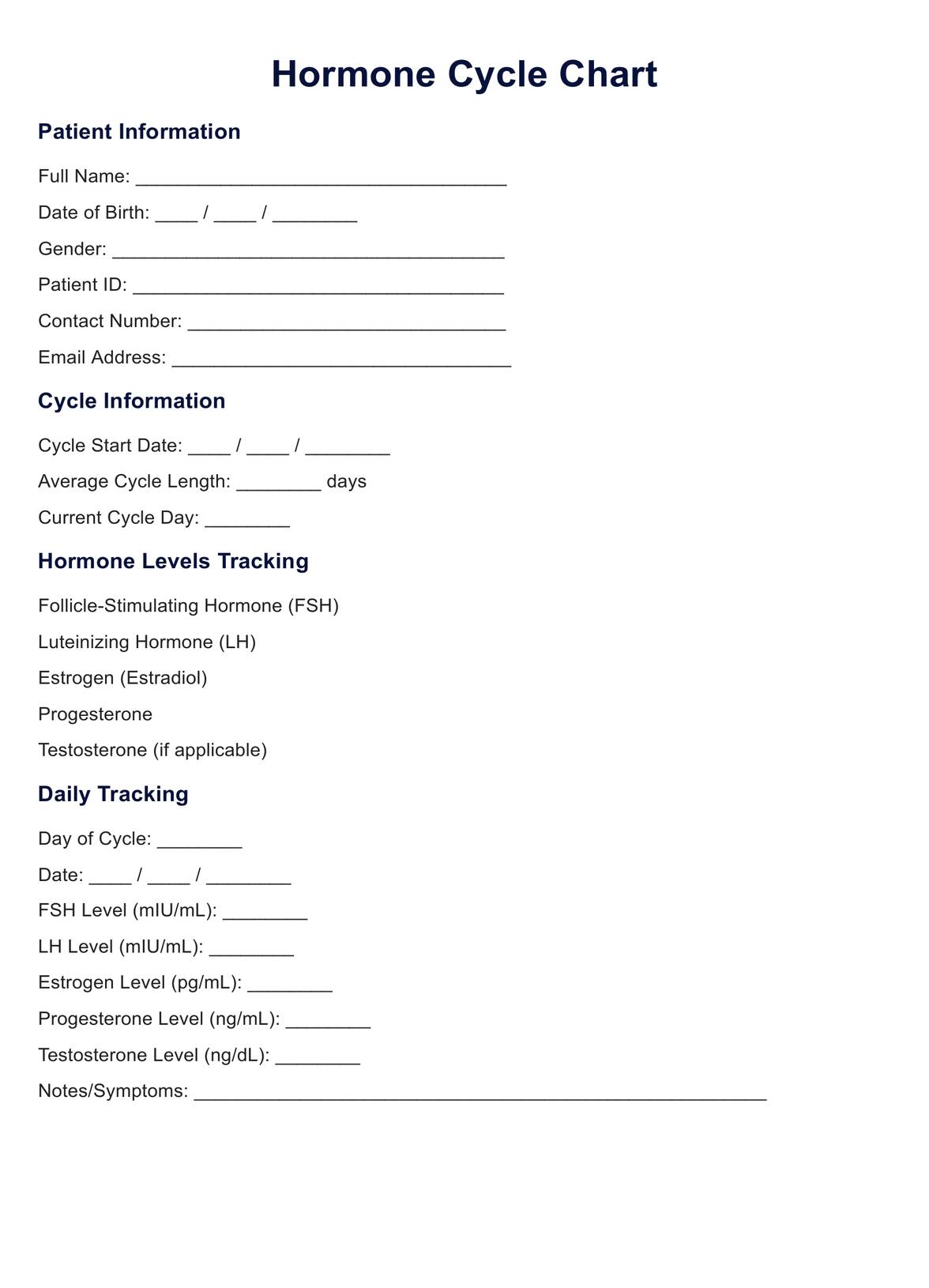The four hormone cycles are the menstrual phase, follicular phase, ovulation phase, and luteal phase.

Hormone Cycle Chart
Discover your body's rhythms with our Hormone Cycle Chart – track, manage, and understand hormonal changes effortlessly. Download your free chart now!
Use Template
Hormone Cycle Chart Template
Commonly asked questions
The most hormonal time of the cycle is typically around ovulation when estrogen levels peak, triggering the release of an egg from the ovary.
You can determine your phase by tracking your menstrual cycle's length and symptoms, such as changes in cervical mucus, basal body temperature, and hormonal levels.
EHR and practice management software
Get started for free
*No credit card required
Free
$0/usd
Unlimited clients
Telehealth
1GB of storage
Client portal text
Automated billing and online payments











